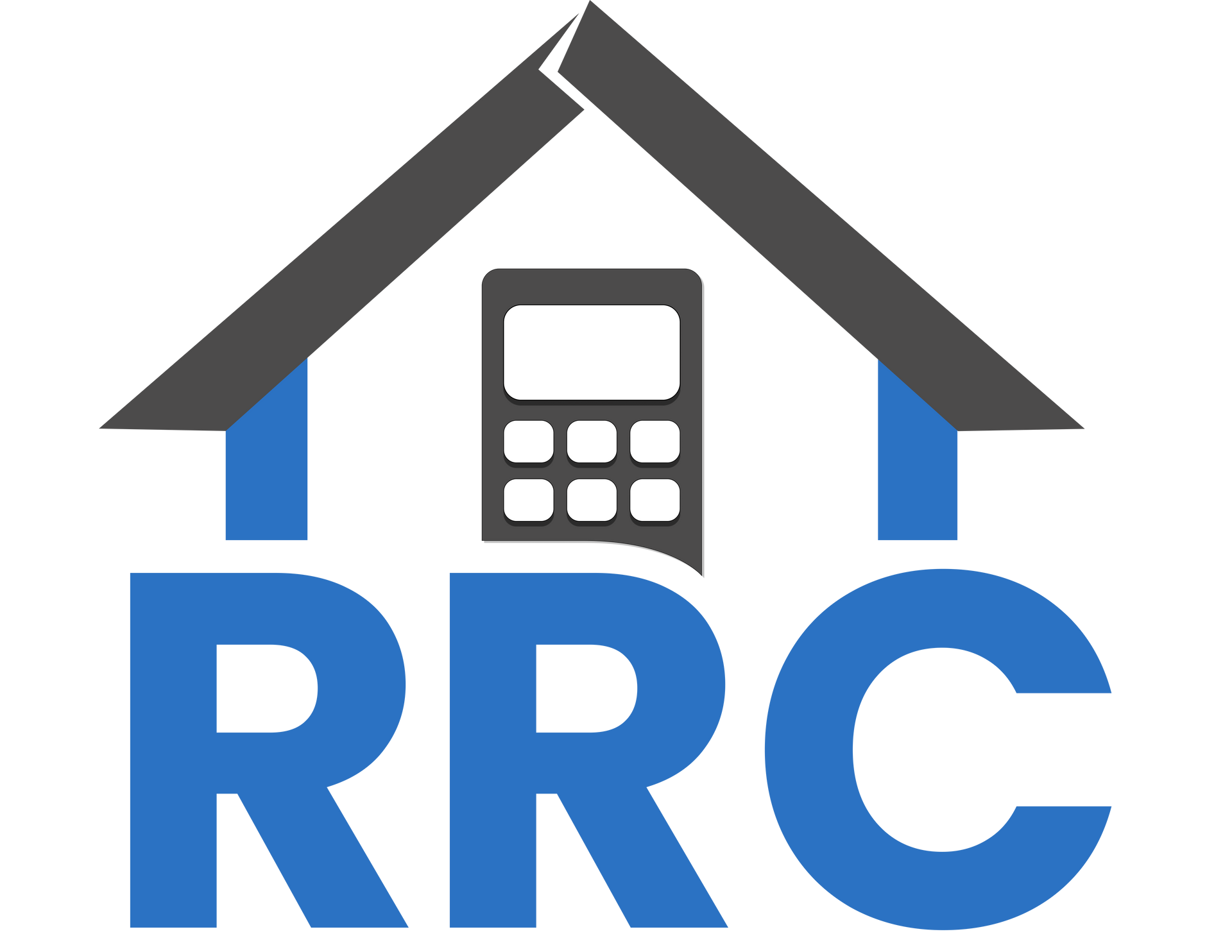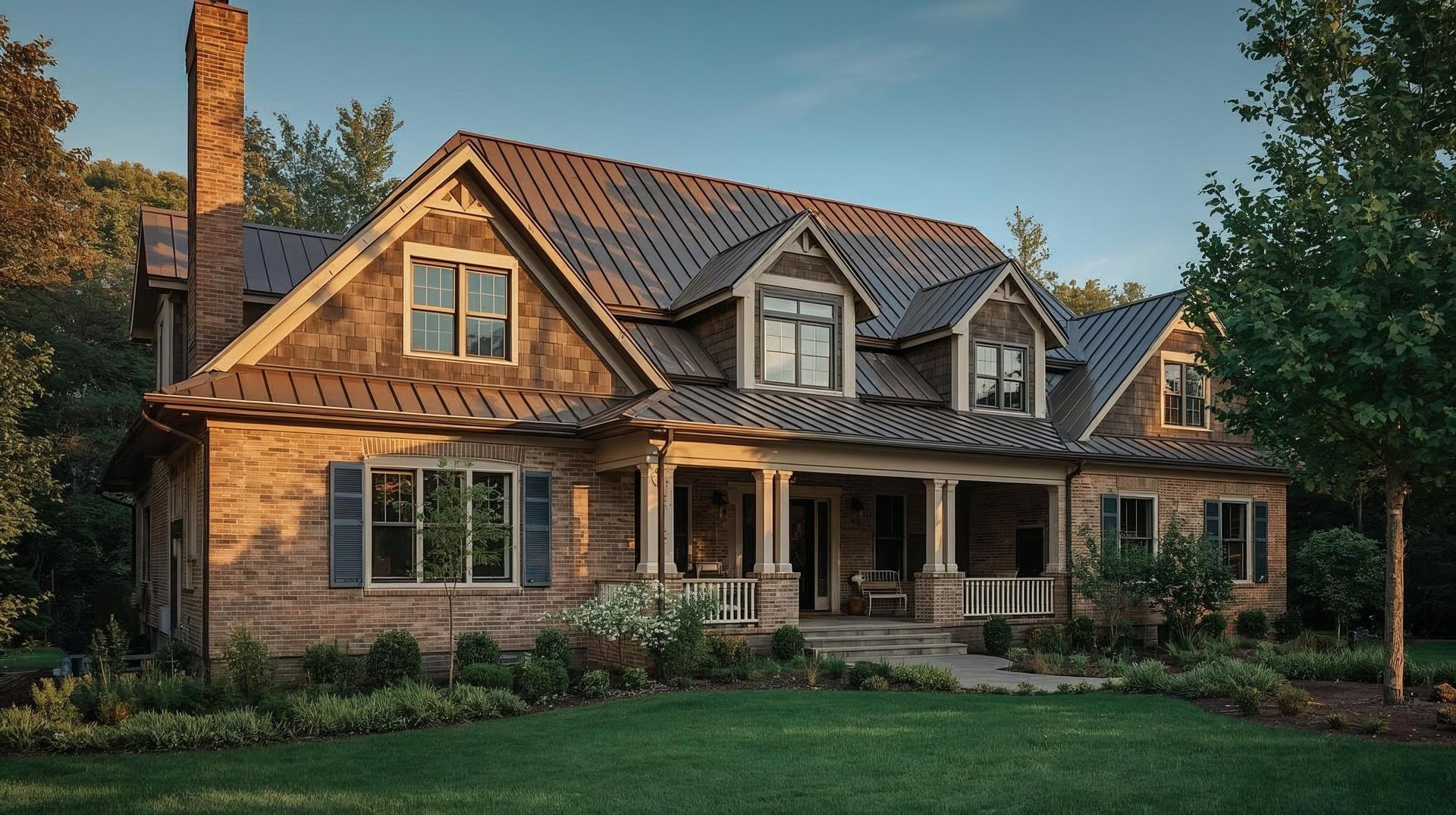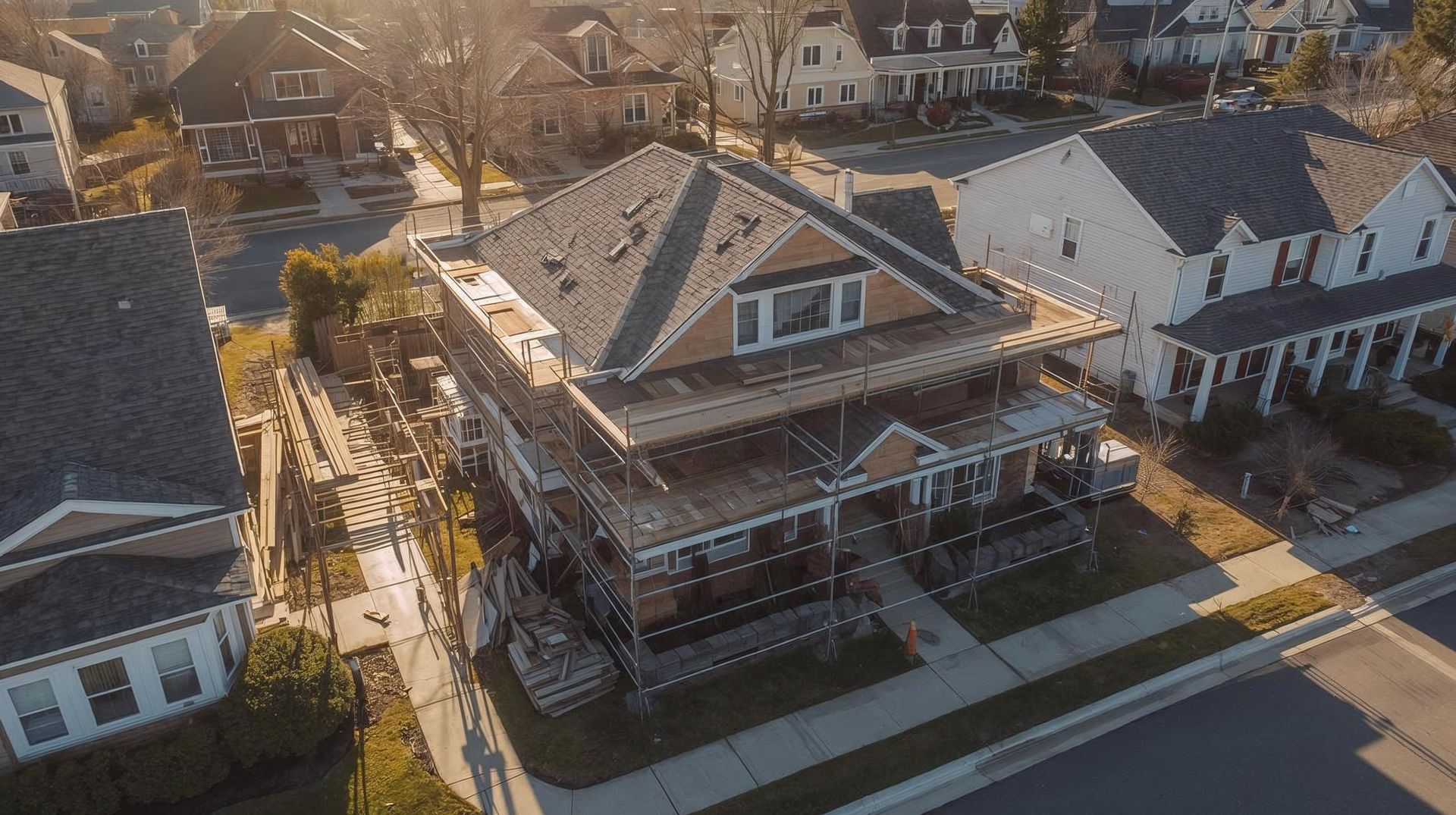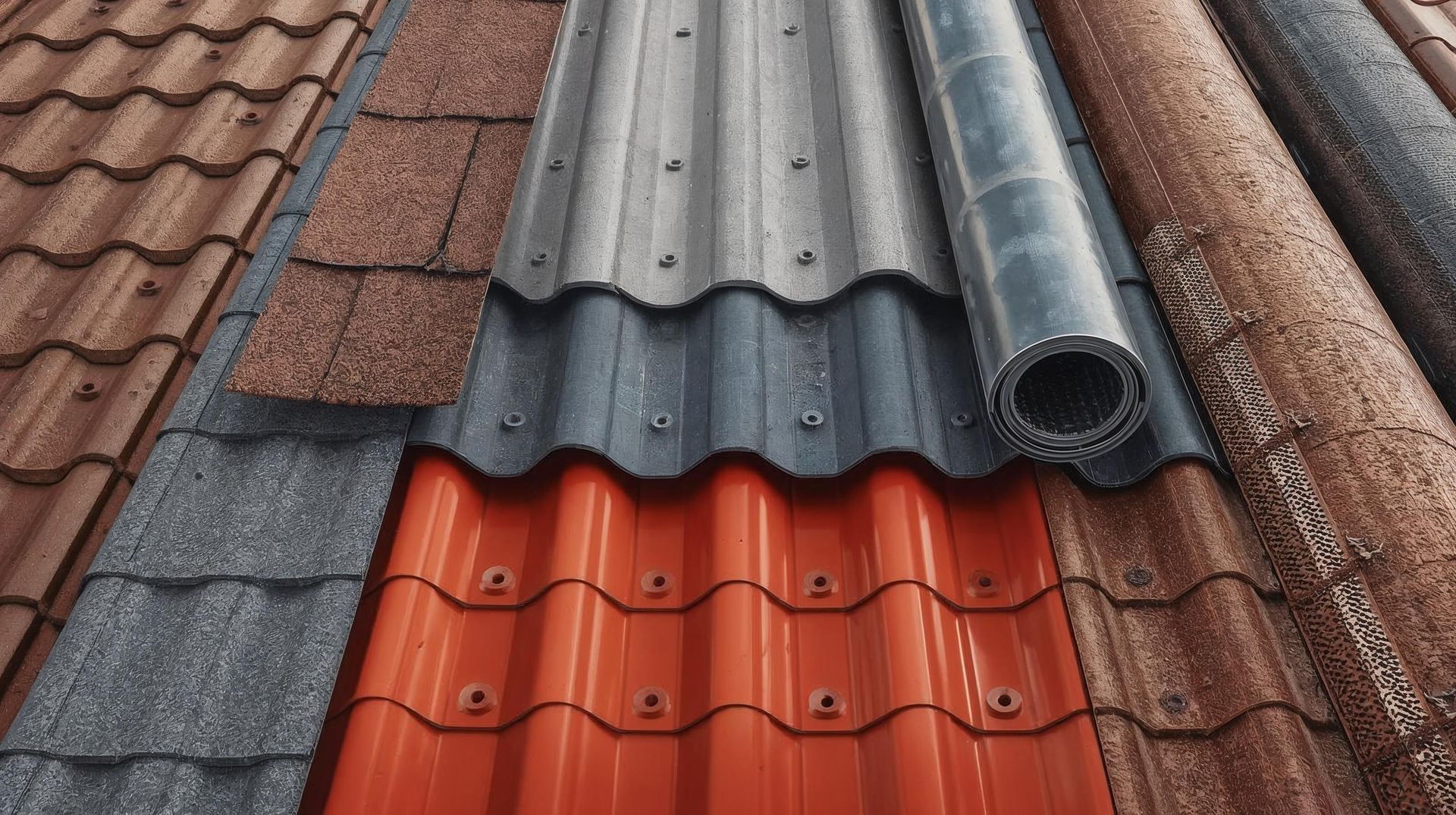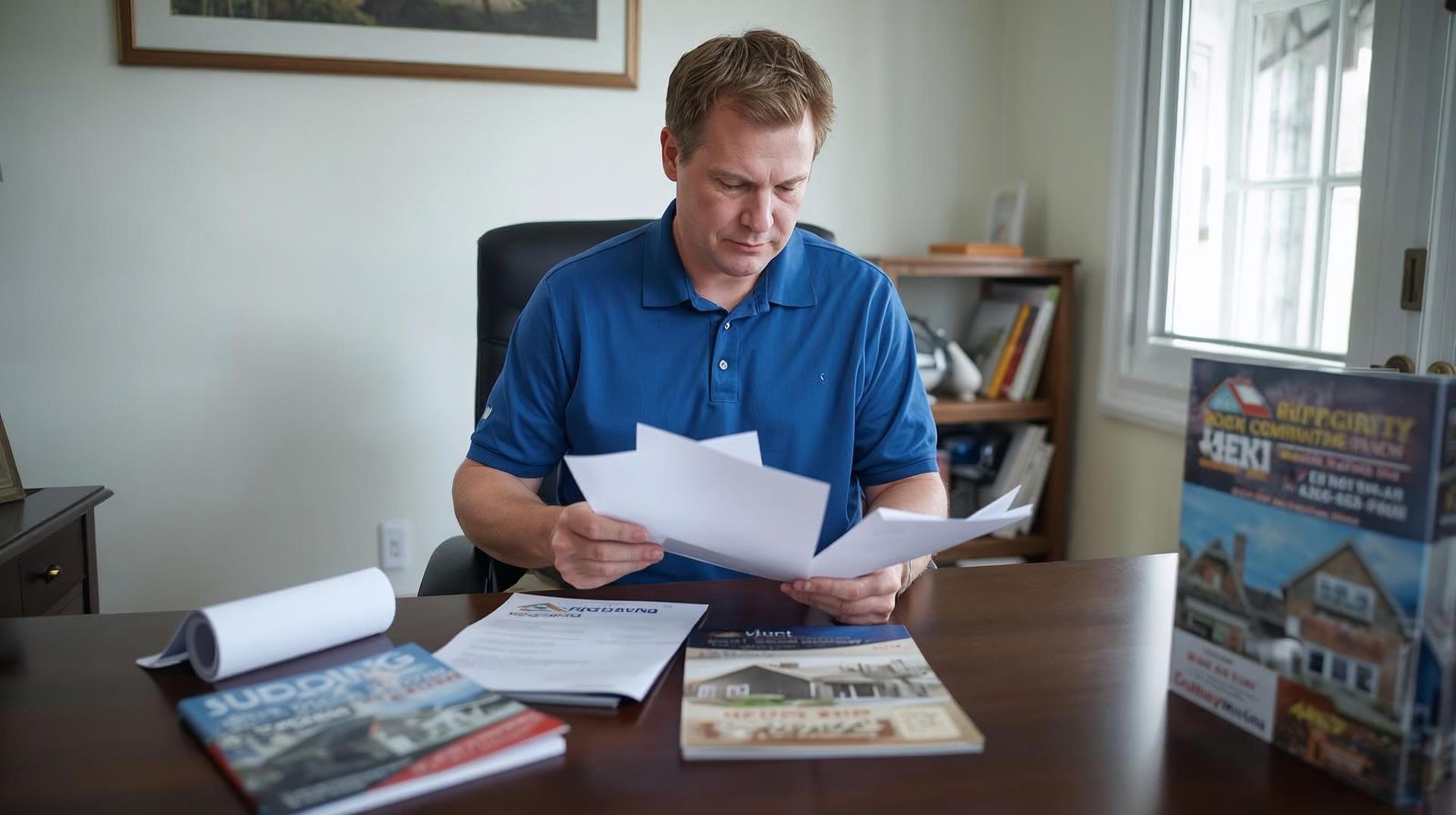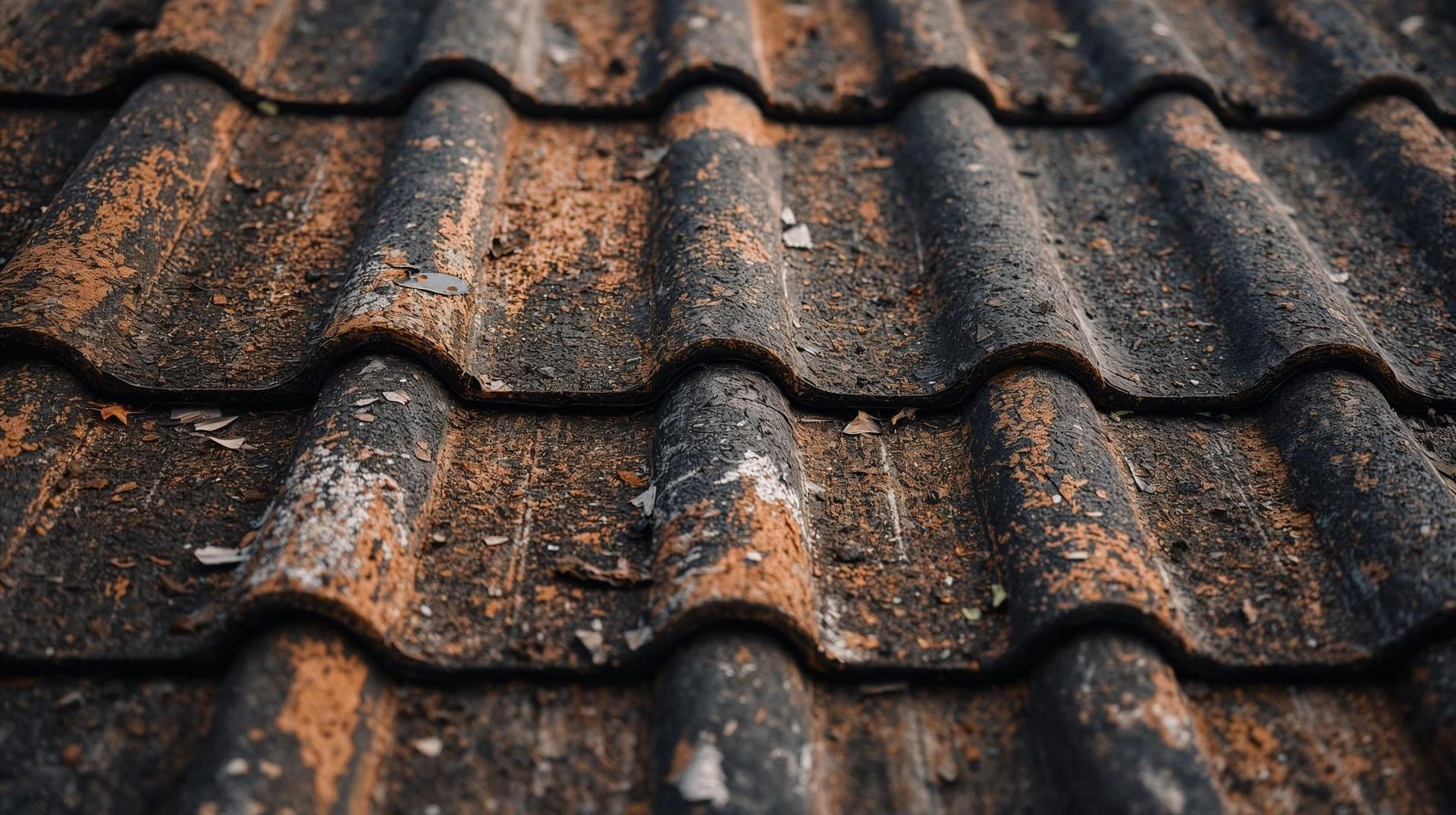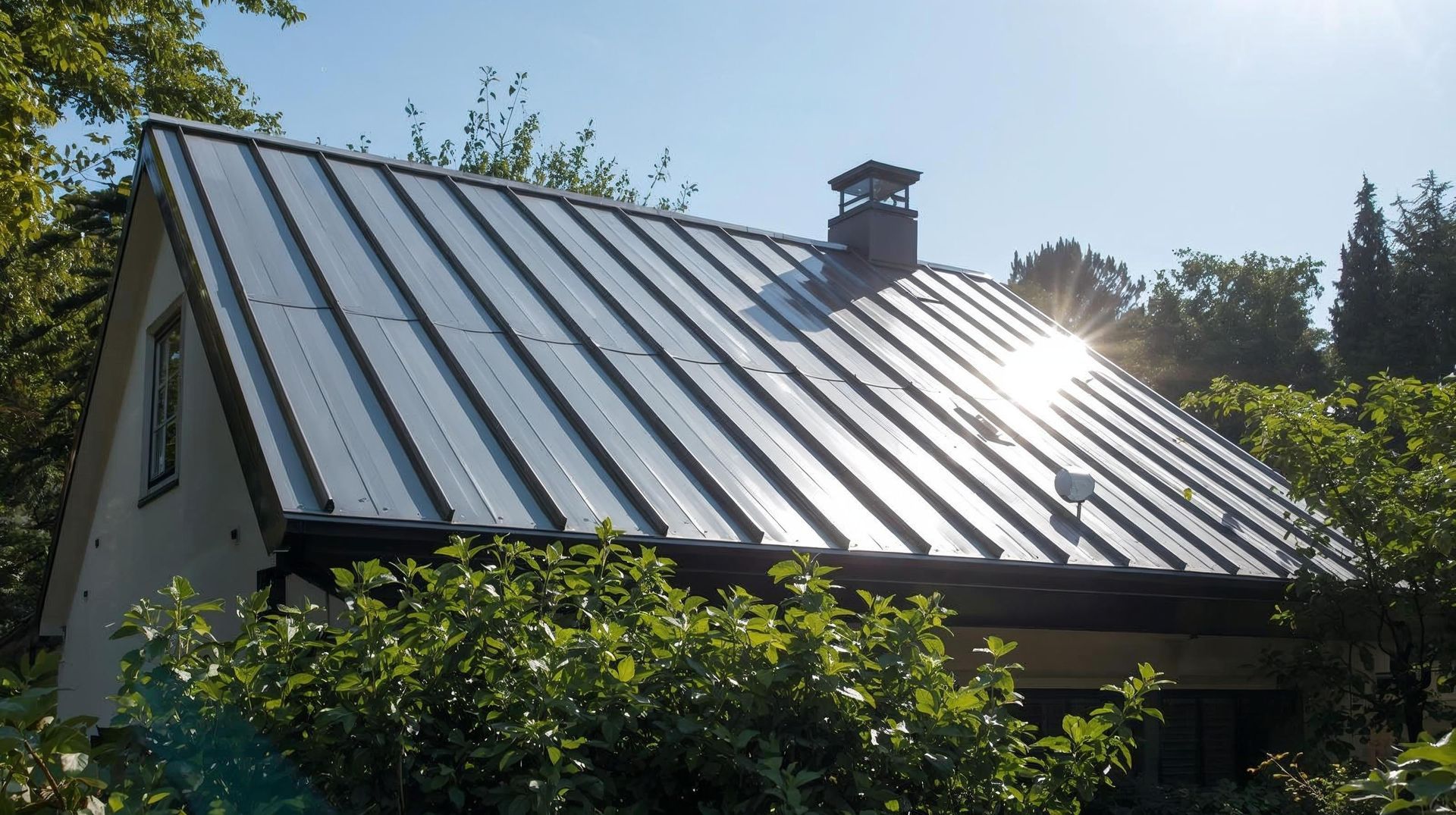How Much Does a New Roof Cost in 2025?
Thinking about a new roof? The first question on every homeowner's mind is,
"How much is this actually going to cost?"
Let's be honest, figuring out the cost of a new roof can feel like trying to hit a moving target. It’s one of the biggest investments you'll make in your home, and the price often seems complex and mysterious.
That’s why we created this guide: to give you the clarity you need. We're going to break down every single element that goes into the price in 2025.
We'll start with the big picture, looking at national averages, and then drill down into the specific details like materials, roof size, and even your zip code. That will shape the final price tag for your unique home.
Key Takeaways
Before we dive into the details, here are the most important points to remember:
- The National Average: The average roof replacement cost in the US for 2025 is between $8,500 and $14,500, but this is just a baseline.
- The Top 3 Cost Factors: The final roof replacement cost depends on three main variables:
- Roofing Material: Your choice of material (e.g., asphalt, metal, tile) is the single biggest price factor.
- Roof Size & Complexity: The total square footage and features like a steep pitch or dormers directly impact the cost.
- Geographic Location: Where you live determines local labor costs, which vary significantly across the country.
- Material Matters Most: The roofing material you choose is the single biggest factor influencing the total cost, with major price differences between options like asphalt shingles ($4 - $11), metal roofing ($8 - $30+), and tile ($10 - $25). (Note: These prices are just averages and are based on per sq. ft.)
- Get Multiple Quotes: The only way to know the true cost for your project is to get at least 3-5 detailed estimates from reputable local roofing contractors.
- Use a Calculator for a Personal Estimate: An online roof cost calculator is the fastest and easiest way to get a personalized estimate based on your home's details before you start making calls.
Want to skip the averages and find your number?
Get an Instant, Personalized Estimate with Our Free Roof Cost Calculator
How Much Does a New Roof Cost in 2025?
A new roof is a critical investment in your home's safety and value, but the final price tag can vary dramatically. There is no single answer to "how much does a new roof cost?" because every home is different.
However, by understanding the key variables, you can build a realistic budget and plan with confidence. This guide will provide a comprehensive look at the 2025 national average cost, break down the factors that influence pricing, and explore the costs of different materials to give you a clear financial picture for your roof replacement project.
What Affects Your Roof Replacement Cost?
The final roof replacement cost isn't just a single number.
It's a combination of many variables. Understanding these factors will help you see exactly where your money is going and what drives the overall cost of your roof replacement project.
- Location & Climate: Your geographic location and local climate heavily influence the final roof replacement cost. The specific roofing material you need must be able to withstand regional weather, whether it's hurricanes on the coast, heavy snow, or the intense sun of the Southwest, all of which impact the type of roof installation required.
- Material Choice: Your choice of roofing material is the biggest variable impacting the total cost. The material costs and cost per square foot can vary dramatically between affordable asphalt shingles, mid-range metal roofs, and premium materials like slate tiles, which have a much higher cost.
- Roof Size & Complexity: The roof size and roof complexity are direct cost drivers. A larger roof with more square footage will naturally require more materials and labor. Features like a high roof pitch, which creates steeper roofs, and multiple dormers or skylights also significantly increase the time, skill, and actual cost of the job.
- Labor Costs: The labor costs you'll pay are determined by your location and the roofing contractor you hire. What roofing companies charge in a major city will be higher than in a rural area due to different overhead and wage rates for a professional roofer.
- Old Roof Removal: A significant part of the job is the tear-off of the old roof. Removing a single layer of existing shingles is standard, but if the existing roof has multiple layers from a previous job, the labor and disposal fees will increase the replacement cost.
- Structural Repairs: Hidden problems with the roof structure can add to your bill. Expect additional costs for structural repairs if your contractor discovers structural issues like rotted roof decking or damaged framing after the tear-off.
- Permits and Building Codes: Municipal building permits are a required part of the roof cost. Additionally, your new roof may need upgrades to meet current building codes, such as improved ventilation or specific underlayments, which will be factored into the final price.
- Seasonal Timing: You can save money by scheduling your project strategically. The roofing industry typically has a peak season (spring and fall) with higher prices. Booking during the off-season can often lower your overall replacement cost and is a smart way to save you money.
A Full Breakdown of Roofing Material Costs & Lifespans
Choosing your roofing material is a balance between your budget, desired aesthetic, and long-term goals. The cost per square foot can range from a few dollars to over forty. Here’s a look at the cost data for the most common roofing material options.
| Material | Average Cost / Sq. Ft. (Installed) |
|---|---|
| Asphalt Shingles | $4.25 – $7.15 |
| Architectural Asphalt Shingles | $6.00 – $10.50 |
| Metal Roofs | $8.00 – $30.00+ |
| Clay Tile & Concrete Tile Roof | $10.00 – $25.00 |
| Slate Roofs | $20.00 – $40.00+ |
| Wood Shingles & Shakes | $14.00 – $30.00 |
Asphalt Shingles: The Most Popular and Affordable Option
The asphalt shingle roof is the standard in the American roofing industry for a reason. It provides a reliable, attractive, and budget-friendly solution for most homeowners.
- 3-Tab Asphalt Shingles: This is the most basic and economical common roofing material.
- Cost: Expect the installed cost per square foot for square-foot asphalt shingles to be between $4.25 and $7.15.
- Lifespan: 15-20 years.
- Pros/Cons: Highly affordable and easy to install, but has a shorter lifespan and is more susceptible to wind damage than other options.
- Architectural Shingles: Though more expensive than regular asphalt shingles, they provide a thicker, multi-layered shingle that offers increased durability and a more dimensional look.
- Cost: The architectural asphalt shingles cost is slightly higher, at $6.00 to $10.50 per square foot installed.
- Lifespan: 25-30+ years.
- Pros/Cons: A fantastic balance of cost and performance. The higher upfront replacement cost is often justified by a longer lifespan and better resistance to the elements. A new asphalt shingle roof using these is a very popular choice.
Metal Roofs: Durability and Long-Term Value
Metal roofs have surged in popularity due to their longevity and modern aesthetic. While not the cheapest upfront, they are a sound long-term investment, and many homeowners are shifting to metal roofing materials lately.
- Cost: The replacement cost for metal roofs typically ranges from $8.00 to over $30.00 per square foot. There are more affordable metal shingles and high-end standing seam panels. An affordable metal roofing option like steel metal shingles will be on the lower end of that range.
- Lifespan: 40-70+ years.
- Pros/Cons: Extremely durable, fire-resistant, and energy efficient. The higher cost and potential for noise during rain are the primary downsides.
Tile Roof Systems: Clay & Concrete
For homeowners seeking extreme durability and a unique, classic style, both clay and concrete tiles are excellent options. Their distinct aesthetic has made them a staple in warmer regions like the American South and Southwest.
- Cost: A new tile roof has a replacement cost of $10 to $25 per square foot. The cost for clay tile is often higher than concrete.
- Lifespan: 50-100+ years.
- Pros/Cons: Excellent lifespan and fire-resistant. However, clay tile roofs are very heavy, potentially requiring reinforcement of the roof structure, and the tiles can be brittle and break if walked on.
Slate Roofs: THE Premium Roof
For homeowners seeking a roof that can last for generations, slate is a premium choice. As one of the oldest and most durable materials in the industry, it's known to last for over a century.
- Cost: This is a luxury roofing material. Expect the cost for slate roofs to be $20 to $40+ per square foot.
- Lifespan: 75-150+ years.
- Pros/Cons: Unmatched beauty and lifespan. The cost is the biggest barrier, along with the extreme weight of the slate tiles.
Wood Roofs: Shingles & Shakes
Wood shingles and shakes deliver a classic, rustic aesthetic but are not a "set it and forget it" option. Their natural composition means they require consistent maintenance, such as treatments to prevent rot and moss, to preserve both their beauty and structural integrity over time.
- Cost: The cost for wood roofs can range from $14 to $30 per square foot.
- Lifespan: 25-50 years, depending on climate and maintenance.
- Pros/Cons: Beautiful appearance. However, wood roofs are not inherently fire resistant (though they can be treated) and require upkeep to prevent rot and moss.
See how these different roofing material options impact your home's estimate? Get a personalized quote in seconds with our Roof Cost Calculator.
Roof Replacement Costs by US State (2025 Estimates)
If you're wondering how much an entire roof costs in your corner of the country, you're in the right place.
Below, you'll find a breakdown of the estimated average price ranges for a standard roof replacement using architectural shingles, organized by region to help you see the costs in your area.
- Northeast:
- ($8,500 - $16,500)
- Higher labor costs and the need for winter-weather protection drive up prices.
- Midwest:
- ($8,000 - $15,500)
- Costs are moderate, with considerations for snow and hail driving material choices.
- South:
- ($6,500 - $15,000)
- More affordable on average, but hurricane-prone areas see higher costs due to code requirements.
- West:
- ($9,000 - $19,000+)
- High labor costs in states like California and logistical challenges in states like Alaska contribute to a higher average cost.
Sample Cost Breakdown for a New Roof
To help you visualize how these different factors come together on a contractor's quote, here is a hypothetical estimate for a standard 1,800 square foot roof replacement using architectural shingles.
(Disclaimer: These figures are an example only and can vary significantly based on your location, roof complexity, and the roofing contractor you hire.)
- Materials (Approx. 40% of Total Cost):
- Architectural Shingles & Accessories: $2,800
- Underlayment, Flashing, Vents, Drip Edge: $950
- Allowance for Plywood Decking Repair (e.g., 4 sheets): $450
- Subtotal (Materials): $4,200
- Labor & Other Costs (Approx. 60% of Total Cost):
- Labor for Tear-Off of Old Roof & Roof Installation: $4,500
- Waste Disposal & Dumpster Fees: $600
- Permits & Licensing Fees: $400
- Subtotal (Labor & Other): $5,500
- Total Estimated Roof Replacement Cost: $9,700
- This example shows how quickly the costs for materials, labor, and permits add up. Remember, changing any of these variables, like choosing a different roof type or having a larger roof, will change the entire equation.
How to Get an Accurate Estimate for Your Home
To find the actual cost for your home, the traditional path is to contact multiple reputable roofing contractor firms. This means researching local companies, scheduling several on-site visits, and then meticulously comparing their detailed, itemized estimates. While this is a necessary final step before signing a contract, it can be a very time-consuming process.
Or, for a faster, easier starting point, you can just use our tool. Our Roofing Cost Calculator gives you a personalized, data-driven estimate in under a minute, all without a single sales call. It's the perfect way to get a solid budget number before you start contacting contractors.
Ready to See Your Number? Find Out Your Roof Cost Instantly!
Why is the quote I received so different from the national average?
The national average blends all project sizes and locations. Your specific quote is based on the exact roof size and complexity of your home, your chosen roofing material (the biggest price factor), and the local labor costs in your specific city, all of which can be much higher or lower than the average.
Will my homeowner's insurance cover the cost of a new roof if it's just old?
No. Homeowner's insurance is designed to cover damage from specific, unforeseen events like storms, hail, or fire. It does not cover the replacement cost of a roof that has simply reached the end of its natural lifespan due to age and normal wear and tear.
What are the most common "hidden costs" in a roof replacement?
The most common hidden cost is the replacement of rotted roof decking, which is only discovered after the old roof is removed. Other potential costs include upgrading ventilation to meet current building codes or removing multiple layers of existing shingles if a "layover" was done in the past.
How long should my new roof actually last?
This depends entirely on the material. A standard 3-tab asphalt shingle roof lasts 15-20 years, while architectural shingles last 25-30+ years. Metal roofs and tile roof systems can last 50 years or more, and a slate roof can last over a century.
Is it cheaper to do a roof repair or a full roof replacement?
A roof repair is much cheaper upfront and is the right choice for isolated, minor damage (like a few missing shingles) on a roof that is less than 15-20 years old. A full roof replacement is more expensive initially, but it is the correct long-term financial choice for an older roof with widespread issues, as it prevents the escalating cost of constant repairs.
